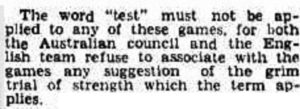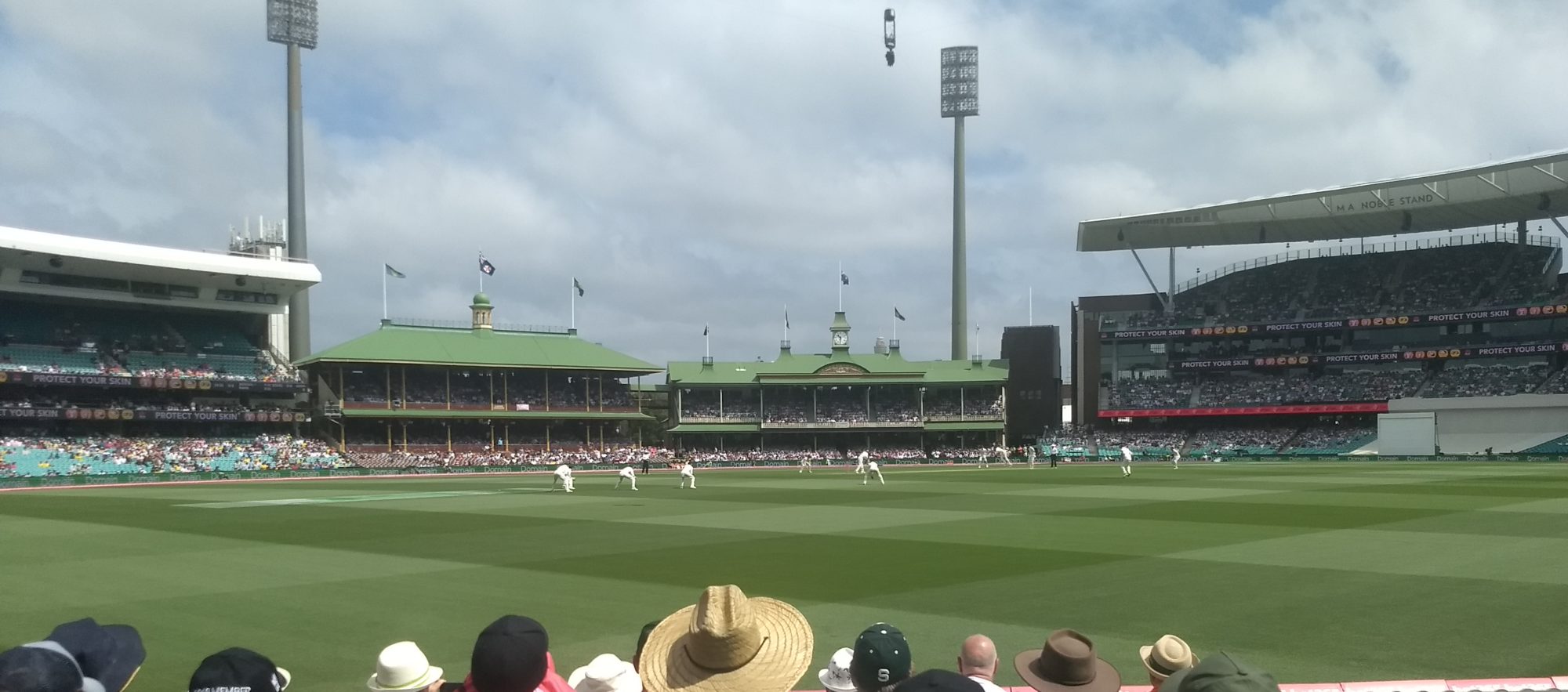Before the Australian women’s cricket team played their touring England counterparts in Brisbane in December 1934, the following directive appeared in the Courier Mail:

No one in the press or elsewhere paid any attention to this instruction, and the first women’s Test match concluded at the Brisbane Exhibition Ground on New Year’s Eve 1934, the visiting English winning by nine wickets.
It’s taken 83 years for Australia and England to come together for their 49th women’s Test (plus one washed out), and their four-day meeting at North Sydney Oval beginning on Thursday 9 November 2017 was a special occasion as the first to be played as a day-night fixture.
The Test, like 27 of the 48 meetings beforehand, finished in a draw. Four sunny uninterrupted days saw 387 overs bowled, 937 runs scored, but only 21 wickets fall, and only two of those on the final day.
It was a placid wicket, but one which saw history made on the Friday and Saturday as Ellyse Perry scored 213 not out, the highest score by any woman for Australia in Test matches.
England’s captain Heather Knight scored 62 and 79 not out, with Tammy Beaumont’s 70 on the opening day the match’s other half-century. But there was little joy for the bowlers, the highlight probably being Beaumont’s second innings dismissal, the penultimate wicket to fall in the game, when she was beaten by a classical leg break from the warnesque Amanda-Jade Wellington.
Unreal! What a ball from Amanda-Jade Wellington.
Watch live and free here: https://t.co/QA9DruPSVr #WomensAshes pic.twitter.com/3ntv21dZhR
— cricket.com.au (@CricketAus) November 12, 2017
Draws are hardly a rarity in Australia-England womens Test encounters – only one match finished in an outright result between 1951 and 1984 – but the final hours would have deflated all but the most hardened of Test match afficionados among the aggregate 12501 spectators who came through the gate on the four days.
Perry was, unsurprisingly, named Player of the Match. Australia’s greatest female cricketer since, and possibly including, Betty Wilson, Perry’s versatility as an athlete is demonstrated by the fact that she became the first person to score both a century in Test cricket and a goal in a FIFA World Cup (which she achieved against Norway in 2011).
But with women’s Test cricket being such a rare beast, what implications did this match have for the future?
I believe it was a public relations success, and one simple reason helped: Marketing. No one women’s Test match in Australia has been promoted to the extent that this was (and indeed many in the past were barely promoted at all). Cricket Australia has been solidly proactive in advancing the inclusion of women and girls in the sport for a decade or more. Their latest five-year strategy document can be summed up by the words WBBL WBBL and WBBL, but the longer forms of the sport are also important in providing equal opportunity.
Daily attendances never fell below 2000 and did not taper off, thanks to the timing (Thursday to Sunday), the location (walking distance from the North Sydney CBD) and the ticket prices ($10 for adult, free for children under 15).
Radio coverage was solid – BBC sent a crew to Australia to augment the ABC Grandstand team – but there was no live television, the default rights holders Channel 9 failing to take the chance on a product (women’s Tests) with no track record of popularity. This mistake is unlikely to repeated, but Cricket Australia’s live-streamed production was of a high standard for those able to watch online.
If the future of live sports broadcasting is in-house over-the-top packaging then CA has shown how it can be done.
As for the duration of the game, the pitch wasn’t ideal – 21 wickets in four days is not a results-oriented wicket – but some of the criticism I heard on the final evening was extremely harsh.
“Poor” pitch? There was a poor pitch in the North Sydney centre square on October 15 when a JLT Cup was abandoned because of uneven bounce. This Test did not use that pitch.
Would people have preferred a snorter that brought a result in perhaps two nights early?
Would a five-day Test have helped? Probably, and there are plenty of precedents for five-day Tests in women’s cricket, but with over rates of 100 per day, is a 500-over Test really necessary? (The men have 450.)
Another option could be a reserve half-day if the match isn’t finished in four.
More Tests? More Tests! This was the first Test match for women anywhere in the world since England and Australia last met at Canterbury in 2015. The North Sydney encounter has whetted people’s appetite for women’s Test cricket without doubt.
As many as six teams (Australia, England, India, New Zealand, South Africa, West Indies) could be relied upon to be competitive at women’s Test cricket now if the commitment is put into doing something about it. The ICC needs to think seriously about a women’s Test league even if it is not an immediate goal. They have an ODI league running so the structure is there,
If I had one fault to identify in the standard of play in this Test it was excessive caution in the batting. But how much practice do the women get at playing multi-day cricket? Way too little.
It is not reasonable to expect players who have nothing longer than 50 over matches on a regular basis to step up and play a four-day Test once every two years impeccably.
There needs to be a regular multi-day competition at domestic level for women’s cricket, and even bring back two-day games in first grade. The BCCI, not noted for its innovation when it comes to women’s cricket, has an established inter-zonal three-day female competition. Cricket Australia must surely aim for something similar.
It doesn’t take much to understand that additional tournaments represent an avenue for more sponsorship, more prizemoney… and more income for the players. Cricket Australia and the Australian Cricketers Association have made giant steps on the road to full-time professionalism and wage parity for its elite female cricketers and more needs to be done.
There is a future for women’s Test cricket, and the 2017-18 day-night game at North Sydney Oval has been a major catalyst. A reason, and a strategy, can be summarised in two three-word slogans: Equal employment opportunity, and Women’s Sheffield Shield.
